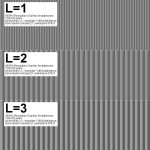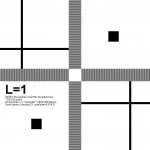kimmo:
thanks for your advice!
My intention is definitely not scientific though it would be nice to know that the
methods are not completely crazy and out of order…

What I wondered was if 3.1 arc seconds would be realistic with a 50mm at 20x?
Since I have no references it's not easy to evaluate the absolute results.
Dave's limit is 1.3 for D=50mm, but I guess it's not a linear increase with magnification?
But looking at this graph it seems very low...
http://www.tvwg.nl/testrapporten/telescoop/images/ATX-04.jpg
Since the pixel size in the smartphone is well defined, (and quite small in newer models)
and it's illuminated evenly. My thought is that it might be better than a home-made-printed res. chart
At 15 meters one should be able to test for 1 arc second, and at 20 m about 0,8 arc seconds,
(with the finest pattern L=1)
Good enough for testing scopes?
As you suggest, changing distance to the test chart seems to be the easiest and most precise way.
Testing with booster I think might be overkill for me.
But I understand that it is "standard" for serious tests.
What is your view of the correlation of indoor tests at shorter distance in perfect air with real
resolution in the field? Does better lenses handle difficult field conditions better? Things that won't show in a simple indoor test like mine? And also, sometimes you actually see less with high mag than low mag in the field…due to air movement etc. So I guess it's complicated…and it gets even worse when you learn more about it…






